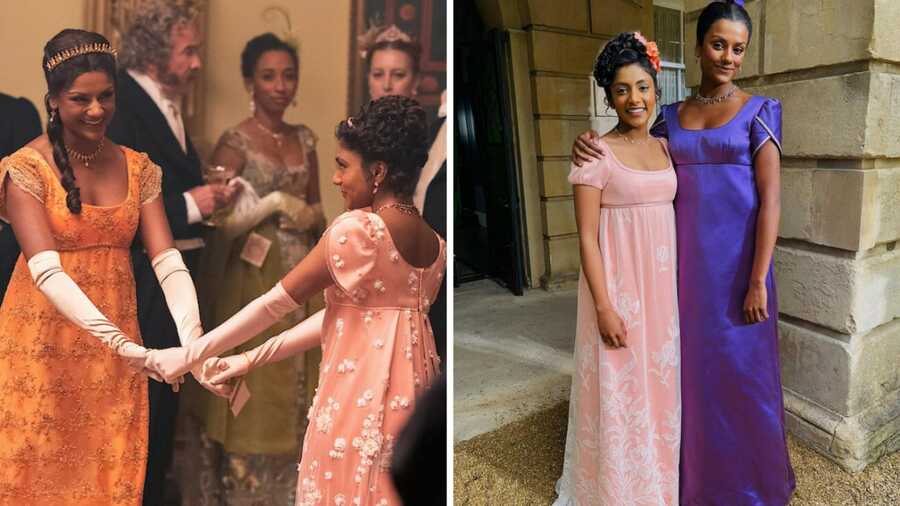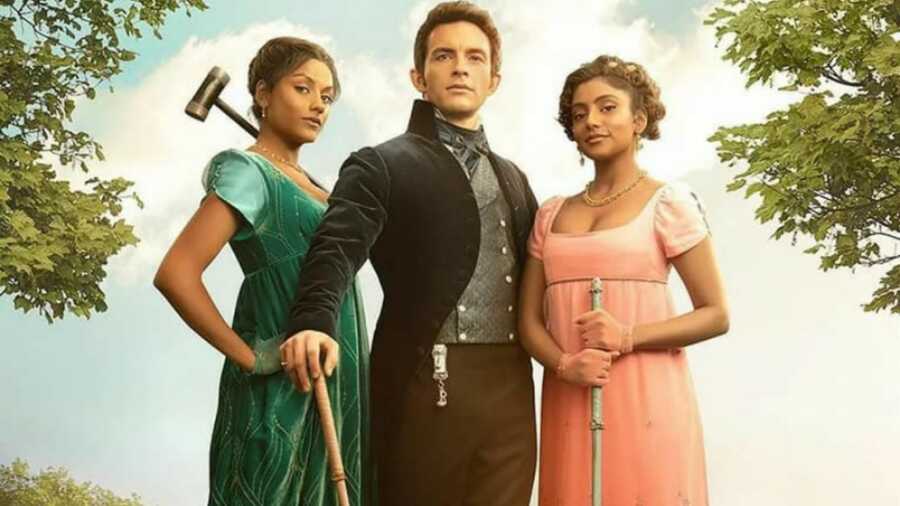Bridgerton stood out in the first season for its ‘colour-blind casting,’ especially the representation of strong, black women — a rarity for dramas set in Regency-era England. The second season has kept the theme going with British-Indian actors Simone Ashley and Charithra Chandran cast as the Sharma sisters, one of whom marries the hero of the season, Anthony Bridgerton.
Indians are not represented very often in Western cinema and television, and even when they are, the inelegance of it leaves much to be desired. Not to mention the penchant for messing it up — Parvati Patil’s disastrous wardrobe choices in The Goblet of Fire and Raj’s accent from The Big Bang Theory come to mind.
This is possibly the first time that a show catering to the West has not only cast an Indian lead but also portrayed the character’s cultural heritage. Having said that, there were some confusing details and inaccurate references that lost the Shondaland production points. Here’s what Bridgerton got right, what they got wrong and what they could have done better.
Right: Featuring strong ‘brown’ brown women
The Sharma sisters Edwina (Chandran) and Kate (Ashley) are dark-skinned Indian women, and while it’s sad that we still need to applaud this in 2022, it needs to be done. Closer to home, Bollywood is infamous for its colourism, preferring lighter skinned leading ladies and the casting choice gives brownie points to Bridgerton.
There are no demure, whitewashed women deciding the narrative here, just a pair of strong Indian women who know what they want, and get it.
Right: Wardrobe choices

Liam Daniel/Netflix and bridgerton/Instagram
From bright colours like pinks, purples and yellows to gowns made of silk and silhouettes influenced by Indian attires — the wardrobe gives the right nod to the Sharmas’s Indian roots.
Those with a keen eye will be able to spot embroidered details, especially paisley motifs in the clothes that the women of the family wear. The jewellery is also inspired by Indian designs, with the sisters sporting jhumka-like earrings and floral motifs in their gold jewellery.
Right: Bollywood influence

Liam Daniel/Netflix
The classical rendition of Kabhi Khushi Kabhie Gham’s title, (give it a listen here), is a tear-jerker for the people who grew up watching this movie — which is almost everyone watching the show. A staple in Indian shaadis, this Bollywood reference — among the many others — takes the cake.
The scene that the song is set to is a traditional haldi ceremony, which scored Bridgerton makers some more brownie points with their Indian audiences.
Questionable: The Sharma’s confusing familial connections

Bridgerton Netflix/Facebook
The Sharmas have a north Indian last name, have arrived from Bombay and address each other with terms that are taken from a mix of Indian languages. While the fact that Edwina and Kate speak Hindustani and Marathi can have logical conclusions, it is the familial terms that has viewers confused.
The sisters call their father appa — a term for father usually used in south Indian languages, Edwina refers to older sister Kate with the more universal didi, while Kate addresses Edwina as bon — the Bengali term for younger sister. While this mish-mash of terms may not make a huge difference to Bridgerton’s Western viewers, but strikes a disparaging note with an Indian audience.
Questionable: The fictitious masala chai
Tea was introduced in India in the late 1830’s, about 10 years after what many consider the end of the Regency era. In some cases, the timeline of the Regency era is extended to the late 1830s. Given that Julia Quin’s books — on which Bridgerton is based — are set between 1813 and 1827, this would mean that the Sharmas would not have had tea back in India, much less the spiced version that Kate loves.
This was clearly an attempt to resonate with us, because who doesn’t enjoy a strong cup of masala chai?
Wrong: The maruli
The murali is a flute, while the ‘maruli’…is nothing. It does not exist, so it’s hilarious when we hear Edwina is a pro at playing it. We could overlook a clumsy Indian reference here and there, given they got many things right, but this mispronunciation was a simple Google search away from success.
All in all, Bridgerton definitely aced what The Big Bang Theory, The Simpsons and Harry Potter massacred. There have been some pretty visible misses, and they should have done their India homework better. Not fair, Shondaland — but you get points for trying.


